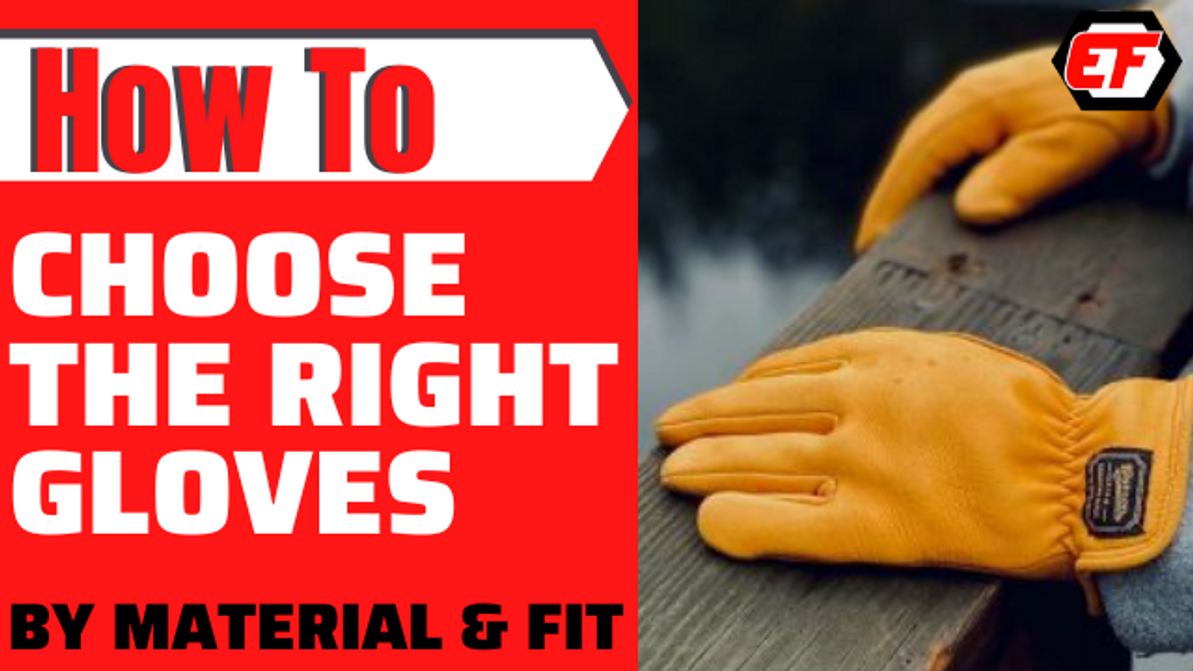
How To Choose Safety Gloves
At Edmonton Fasteners, we understand the importance of protecting your hands from everyday hazards. Whether you're working in a factory, on a construction site, or even doing some DIY at home, safety gloves are essential. We carry a wide range of gloves from trusted brands like Ansell, Bob Dale, Mechanix, Impacto, Milwaukee, Rigid, and Superior. In this guide, we'll walk you through how to choose the right safety gloves based on materials, uses, and features.
Material Matters
Choosing the right material is crucial for the kind of work you do. Here’s a breakdown of common glove materials and their benefits:
Leather
Leather gloves are made from cowhide, pigskin, or goat skin. They are known for being durable, flexible, and breathable. Cowhide is the most common type and offers great protection against abrasions. These gloves are ideal for woodworking, landscaping, and outdoor work.
Canvas
Canvas gloves are thick and strong, making them perfect for heavy-duty tasks. They protect against cuts and blisters, and some are water-resistant. These gloves are often used in industrial settings where durability is key.
Latex
Latex gloves are widely used in healthcare, food service, and manufacturing. They are thin, flexible, and offer excellent protection against bacteria, viruses, and chemicals. However, they should be avoided by people with latex allergies.
Nitrile
Nitrile gloves are similar to latex but are made from synthetic rubber. They are more resistant to punctures and chemicals, making them a popular choice in labs and automotive shops.
Polyurethane
Polyurethane gloves provide excellent grip and resistance to oils and chemicals. They’re often coated over fabric for added protection while remaining comfortable and flexible.
PVC
PVC gloves are known for their strong grip, even in wet or oily conditions. They are commonly used in industries that require high levels of dexterity and control.
Cuff Styles: More Than Just a Design Choice
The cuff of a glove can make a big difference in comfort and protection. Here are some common styles:
Knit Wrist Cuff
This snug cuff helps keep out dirt and debris. It's commonly found on leather, cotton, and winter gloves.
Ranch Cuff or Safety Cuff
A loose, ventilated cuff that keeps your hands cool. Great for long shifts or hot environments.
Slip-On Cuff
Designed for easy on-and-off use, this cuff has no seam, making it ideal for jobs that require frequent glove removal.
Long Cuff (Gauntlet)
A longer, looser cuff that offers extra wrist and forearm protection. While it provides more coverage, it may not stay on as securely as other styles.
Choosing the right safety gloves can make all the difference in your daily work. Whether you need protection from cuts, chemicals, or extreme temperatures, there's a glove out there for every job. Don’t forget to follow us on Instagram and subscribe to our newsletter for more tips and updates. Have a GLOVELY day!
Tert-Butyl peroxybenzoate (TBPB) a chemical compound from the group of peresters. It is often used as a radical initiator in polymerization reactions, such as the production of LDPE from ethylene, and for crosslinking, such as for unsaturated polyester resins.
TBPB is a low volatility ,high purity,liquid, aromatic peroxuester.it is effective as medium of a broad spectrum of monomers e.g .styrene.ethylenn,acrylics.it is also used to cure (copolymerzation) unsaturated resins .
TBPB is a clear light yellow liquid, which is little soluble in water but well in many organic solvents such as ethanol or phthalate.
As peroxo compound, TBPB contains about 8.16 wt% of active oxygen and has a self accelerating decomposition temperature (SADT) of about 60 °C. The SADT is the lowest temperature at which self-accelerating decomposition in the transport packaging can occur within a week, and which should not be exceeded while storage or transportation.[2] TBPB should therefore be stored between minimum 10 °C (below solidification) and maximum 50 °C. Dilution with a high-boiling solvent increases the SADT. The half-life of TBPB, in which 50% of the peroxy ester is decomposed, is 10 hours at 104 °C, one hour at 124 °C and one minute at 165 °C. Amines, metal ions, strong acids and bases, as well as strong reducing and oxidizing agents accelerate the decomposition of TBPB even in low concentrations.[ However, TBPB is one of the safest peresters or organic peroxides in handling. The main decomposition products of tert-butyl peroxybenzoate are carbon dioxide, acetone, methane, tert-butanol, benzoic acid and benzene.
98%Tert-Butyl Peroxy Benzoate,98%Tert-Butyl Peroxy Benzoate Compound,98%Tert Butyl Peroxy Benzoate,98%Tert-Butyl Peroxy
Jiangxi Zhewei Material Technology Co.,Ltd , https://www.jxzwchem.com